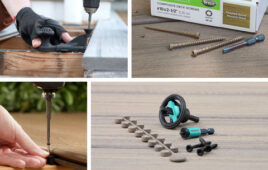By Dr. Jody Muelaner

A standoff is a double-ended threaded fastener used to set a distance between two parts. Typical standoffs (from left to right): female/female, male/female, and male/male.
A standoff is a threaded fastener used to hold two parts a set distance apart. At each end a standoff may have a threaded shaft (male) or a threaded hole (female). They may, therefore, be designated as male/male, male/female, or female/female.
A male end of a standoff resembles a shoulder bolt, however, instead of a head, a standoff has another threaded fastener at the other end. Other important parameters are the length (distance between shoulders) and the thread size.
Standoffs may have an external profile that is round, allowing only finger tightening of individual ends although machine screws and/or nuts can be securely fastened against each other.
Alternatively, the body of a standoff may have a hexagonal profile enabling tightening using a spanner.
Both spacers and standoffs are commonly used within electronic assemblies. They are also both used to provide space for cooling airflow and provide electrical insulation. They may be referred to as PCB Standoffs. Common materials for such standoffs are brass, stainless steel, nylon polyoxymethylene (POM), polyvinyl chloride (PVC), and ceramics.
Spacers differ from standoffs in that spacers do not normally have threads. Spacers are typically just a length of tube through which a bolt may be inserted. These distinctions are not always consistently applied and it is possible to find threaded standoffs referred to as spacers in many catalogues.
Snap-in ‘spacers’ are also available, which are actually a form of standoff. These have a sprung push fit fastener at one end that allows them to be snapped into a board or panel. They may have another snap-in fitting or a threaded hole at the other end, enabling another board or panel to be screwed onto the end of the standoff.





Tell Us What You Think!